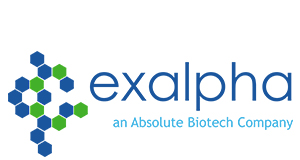Adiponectin Receptor 1
Adiponectin Receptor 1
SKU
EXAX2050B
Packaging Unit
50 µg
Manufacturer
Exalpha Biologicals Inc
Availability:
loading...
Price is loading...
Background: Alzheimer's disease (AD) is characterized by formation of plaques of amyloid beta peptide (Abeta). Autosomally-inherited AD had been shown only in connection with coding sequence mutations. Likely transcription factors whose mutation can cause loss of function are ADR1, MIG1, and PuF, and for gain of function; E12/E47, ITF-2, and RFX2. Adr1 controls the expression of genes required for ethanol, glycerol, and fatty acid utilization (in yeast). Adr1 can act directly on the promoters of ADH2, ACS1, GUT1, CTA1, and POT1. The yeast homolog of the AMP-activated protein kinase, Snf1, promotes Adr1 chromatin binding in the absence of glucose, and the protein phosphatase complex, Glc7.Reg1, represses its binding in the presence of glucose. A post-translational process is invloved in the regulation of Adr1 binding. Chromatin binding by Adr1 is not the only step in ADH2 transcription that is regulated by glucose repression, Adr1 can bind to chromatin in repressed conditions in the presence of hyperacetylated histones. In yeast, nuclear extracts prepared from glucose-repressed and glucose-derepressed cells are equally capable of supporting miniAdr1-dependent transcription and pre-initiation complex formation.
Concentration: See vial for concentration
Formulation: Provided as solution in phosphate buffered saline with 0.08% sodium azide
UniProt: Q96A54
Caution: This product is intended FOR RESEARCH USE ONLY, and FOR TESTS IN VITRO, not for use in diagnostic or therapeutic procedures involving humans or animals.
Concentration: See vial for concentration
Formulation: Provided as solution in phosphate buffered saline with 0.08% sodium azide
UniProt: Q96A54
Caution: This product is intended FOR RESEARCH USE ONLY, and FOR TESTS IN VITRO, not for use in diagnostic or therapeutic procedures involving humans or animals.

 Deutsch
Deutsch




